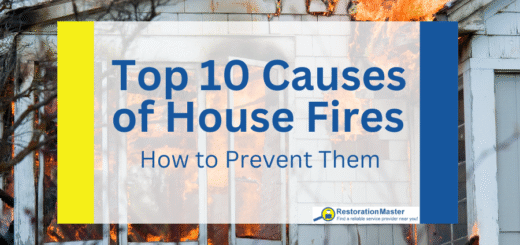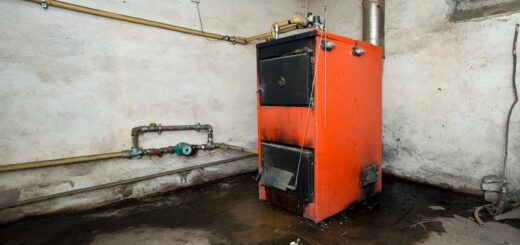How to Inspect a Fireplace
As the temperatures start to cool and people turn on their wood-burning stove or fireplace, they may be in for some dangerous surprises, especially if they haven’t been cleaned. This is one of the leading causes of house fires in the fall and winter times.
The best way to prevent these home fires is to have them inspected and cleaned each year. While inspecting a fireplace isn’t difficult, it is a dirty job. Before getting started, make sure to change into some old, worn clothes as well as a hat. You’ll also want to put on a respirator or dusk mask with some safety goggles to protect your eyes.
You’re ready to proceed with inspecting a fireplace.
1. Check the firebox for loosening joints or cracks.
If you have a masonryMasonry is the craft or construction of structures using mat... More fireplace, check the bricks and mortar for cracks and damage. Any firebox joints and cracks can be fixed using refractory cement. This mixture is designed to withstand extreme heat conditions within the fireplace and can be found at fireplace stores.
2. Open the damper completely.
The door to the damper should open up completely and fit snugly against the throat. Just make sure the metal part doesn’t have any cracks, rusted through sections or severe pitting. If the damper itself needs to be replaced, it’s recommended to call a professional as this must be done carefully.
3. Use a high-powered flashlight to check the flue for damage.
The metal flue liner joints should be well aligned and clean. MasonryMasonry is the craft or construction of structures using mat... More and tile flue liners should be free of cracks and remain solid. If any repairs are needed, they will need to be done by a professional.
4. Check for and clear out any debris from the flue.
Lots of leaves, twigs and dirt may blow into the flue from the chimney. The chimney is also a favorite place for many birds and squirrels to nest, especially during the spring and summer time. Make sure to check before using it after the summer months.
5. Check the flue from the roof if you can’t see everything from below
If you feel at all uncomfortable with getting up on the roof or inspecting the flue from the chimney, don’t hesitate to hire a professional. They can fully inspect and clean it from the chimney.
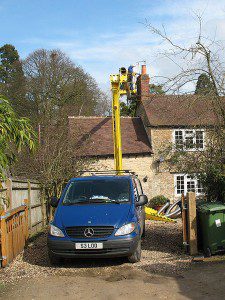
Hire a Professional Chimney Sweep
Of course, at any time you feel uncomfortable or simply don’t want to inspect your chimney or fireplace, you can always hire a professional chimney sweep. Many are not expensive, ranging around $100 – $200 for a full inspectionInspection is the careful examination and assessment of a pr... More and cleaning.
Some chimney sweeps use lights and small video cameras to conducts a more detailed inspectionInspection is the careful examination and assessment of a pr... More of the flue. They can also create a better visual record of the chimney and fireplaces condition for the homeowner.
While the chimney sweep industry is not licensed or regulated by a government agency, they can apply for certification by the CSIA, or Chimney Safety Institute of America or members in the NCSG, or National Chimney Sweep. These organizations promote overall professionalism and education in the industry by providing continuing education opportunities and testing applications to keep members fully updated on the trends of fire safety and current technology.
Creosote Cleaning
While wood is burning in the fireplace, water vaporVapor is the gaseous form of a substance that is typically l... More, smoke and gases are released. Most of these fumes are swept up in the flue and released from the chimney, but as they reach the top, they make contact with cooler air from the outdoor and condense, which forms creosote.
What is Creosote?
Creosote is a brown or black residueResidue is any leftover material, such as soot, dust, or che... More which clings to the inner surfaces of chimney flues. It can have a hard and glassy, dry, flaky and even sticky appearance and texture. But when it accumulates within the flue, it can catch on fire.
While new flue liners are rated to withstand 1700-degree temperatures, the flue temperatures can reach as high as 2,500 degrees. If a fire were to occur within the flue, the surrounding wood framing and insulationInsulation is a material used in buildings to reduce the tra... More within the house can also catch fire.
Fire Damage from Chimney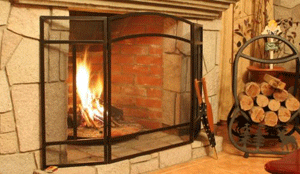
Fire damage from chimney flues can be extremely dangerous. Just a small hot spot can remain ignited for hours after the fire in the firebox is put out. As it’s hidden within the chimney, fires can start and spread within the flue and remain undetected.
This is why it’s crucial to remove all sootSoot is fine black particles composed of carbon and other ma... More, debris and creosote from the chimney flue. Chimney sweep professionals have seen a lot of fireplaces and flues so they are better equipped to identify signs of a fire and tell the difference between creosote and sootSoot is fine black particles composed of carbon and other ma... More buildup.
DIY Chimney Cleaning
If you decide to clean the chimney yourself, use common sense: take all safety precautions to protect yourself and your home. Working on the roof is also dangerous. Keep in mind that hiring a good chimney sweep is not costly and these professionals have all the equipment, training and experience to provide peace of mind.
Being the homeowner, it’s important to know all details and steps involved in the process to ensure everything is safe and works well in your home. So be sure you know exactly what you’re doing for the particular job.
Check out these chimney cleaning tips:
- Get the right brushes. Choose chimney cleaning brushes with stiff plastic or wire bristles. The handles on them should be threaded so you can attach a number of fiberglass, flexible rods which allow you to reach and clean the full flue.
- Lay drop cloths around the hearth area in the house and close the glass doors. Use a heavy-duty shop vac to remove all loose debris from the cleaning.
- Start at the chimney’s opening, brushing the entire flue’s surface as far as you can reach. Then add a length of rod to reach further up the flue to continue the cleaning.
- Finish cleaning the firebox, using the shop vac to remove the remaining debris. Don’t forget to vacuum the damper and smoke shelf.
Fire and Smoke Damage RestorationRestoration is the process of returning a property to its pr... More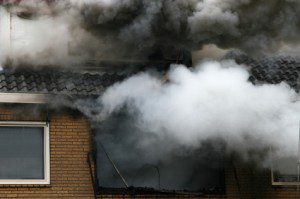
While it’s crucial for fireplaces and chimney sweeps to be inspected and cleaned before they are used, accidents can still happen. Or often, we look forward to a nice fire on a chilly day that we forget to inspect the flue before lighting it up.
Resulting in dangerous consequences, the accumulation of creosote in the flue can leadLead is a heavy metal that can be toxic to humans, especiall... More to serious fires and smoke damage. If at any time you find fire and/or smoke damage around your fireplace or any part of your home, don’t hesitate to contact a fire damage restoration professional.
Many are available 24/7 and will respond right away to conduct emergency pre-cleaning and remove stubborn smoke and sootSoot is fine black particles composed of carbon and other ma... More byproducts from the fire. If any furnishings or building materials were charred or burned during the fire, they can also remove soiled materials and restore hard surfaces to fully clean the affected area.
Don’t hesitate to contact your local fire restoration provider.










